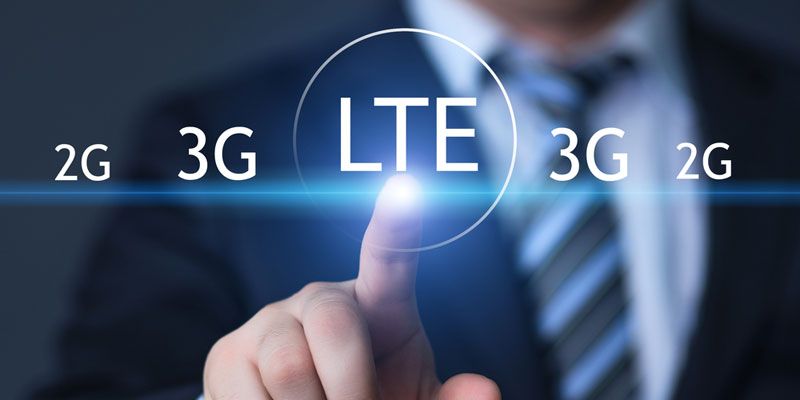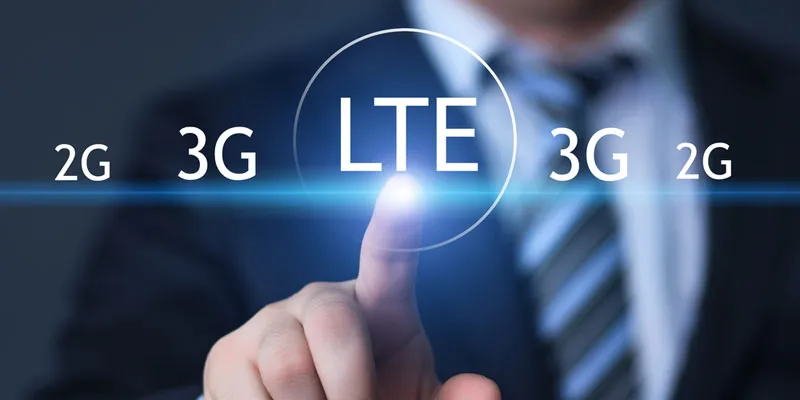Unlicensed spectrum holds key for broadband revolution in India
V Sridhar

Sunday July 19, 2015 , 6 min Read
India stands at the cusp of an unprecedented startup evolution. Established professionals, as well as college youngsters, are developing digital products to solve day-to-day problems and improve the quality of life. Mobile broadband is the key basic infrastructure that is required to realise this dream. And yet, mobile users are also beset with network issues: dropped calls, fuzzy reception, and numbers that are unreachable are all too common. Operators complain about the scarcity of radio frequency spectrum, which is an essential resource for mobile communications.

Image credit "ShutterStock"
The amount of licensed spectrum per operator is more limited in India as opposed to the international standards. There is, however, an exciting prospect: using unlicensed spectrum to improve mobile users’ Internet experience.
Growing use of unlicensed spectrum
The use of devices in unlicensed spectrum was first authorised by the Federal Communications Commission (FCC) in the U.S. in 1938. The initial qualifying devices had low power emission and effectiveness in a limited area. These were wireless record players and remote control devices, followed by wireless microphones, garage door openers, telemetry systems, security alarms and cordless telephones. With advancement in technology and increase in functionality of devices, new bands have been released by FCC for unlicensed use, at 902-928 megahertz (MHz), 2400 – 2483.5 MHz, and 5725 – 5850 MHz. By 2008, 955 MHz were allocated to unlicensed uses below 6 gigahertz (GHz).
The pivotal moment in the history of unlicensed spectrum came in 1985 when the FCC ruled to allow the use of Direct-Sequence Spread Spectrum technology for communications in the Industrial Scientific and Medical (ISM) band in the US. Thereafter, a number of important deployments in this band emerged, such as Wi-Fi, Bluetooth and radio-frequency identification (RFID). The number of Wi-Fi hot spots around the world is growing at an estimated annual rate of about 270 per cent, with a count of more than 70 million spots, out of which 63 million are present in residential homes.
The new developments worldwide in the use of unlicensed band include low-power radio communication across wide areas, such as communications between devices in Internet of Things (IoT), which allows remote control of devices across network infrastructure. These have a variety of applications including managing utilities and public services in ’smart cities’. Alliances such as LoRaTM have been developing technologies in the 902-928 MHz ISM band (in the US) and 779-787 MHz in China for IoT and related areas. Further, Long Term Evolution (LTE) – Unlicensed that operates in the Wi-Fi unlicensed band of 5 GHz can provide seamless connectivity between the cellular broadband network and micro in-building networks, thereby increasing capacity and coverage of our macro-cellular networks.
Status of unlicensed spectrum in India
Unlicensed spectrum has been an effective catalyst for development, as indicated by the proliferation and usage of Wi-Fi networks worldwide. According to a recent report by Prof. Katz at the Columbia Institute for Tele-Information, the economic value of unlicensed spectrum in the US alone will be about $49.78 billion of the annual GDP by 2017. The technologies and applications that enable the above include Wi-Fi offloading from cellular networks, residential Wi-Fi, machine-to-machine communication, Smart City deployments, agricultural automation and wireless Personal Area Networks (PANs).
The late Apple CEO, Steve Jobs, is said to have been unhappy with the high cost and slow speed of mobile data networks, and hoped to solve the problem by convincing consumers and businesses to share their high-speed Internet connections via free and open ‘guest’ Wi-Fi networks.
India has the potential of becoming the largest Internet-using country after China, as current estimates show that five to seven million mobile Internet users are added and about 25 million smartphone shipments happen every quarter in the country. The huge demand for mobile broadband requires adequate spectrum and capacity in radio access networks. In a spectrum-starved country such as India, where each operator gets about one-fourth of licensed spectrum as compared to operators in other countries, unleashing the potential of unlicensed spectrum is critical.
Though the government has started initiating steps for releasing more licensed spectrum and introducing spectrum trading and sharing, it is worthy to note that unlicensed spectrum can be a good complement in increasing the capacity of our networks.
In 2014, the Telecom Regulatory Authority of India, in its recommendation on ‘Delivering Broadband Quickly,’ has indicated de-licensing additional 100 MHz in the 5.8 GHz for outdoor usage. However, the effort is not commensurate with developments in other countries. The common fear of interference can be tackled as most of the devices and technologies operating in these bands are short-range and low-powered.
The potential value derived from using unlicensed spectrum in bridging the digital divide and administering social-economic services such as e-learning, e-commerce, telemedicine and e-agriculture makes unlicensed spectrum a public good. Moreover, as government rolls out the National Optical Fibre Network (NOFN) to connect remote parts of the country, unlicensed spectrum can complement traditional access, especially for local access, to improve broadband penetration.
The penetration of Wi-Fi hotspots in India is poor (at about one-fourth that in U.S.), and about half of China’s, and mobile operators have been hesitant to use Wi-Fi to complement their macro cellular networks, both for coverage and capacity. As we embark on Telecom 2.0 in India for ushering broadband internet infrastructure, it is important to assess the economic value of unlicensed spectrum for all Indians.
For example, it is common for most smartphone users to switch on their Wi-Fi connection as soon as they enter homes or offices, either to avoid mobile data bill shocks or for better experience. However, as per TRA data, there are only 15 million landline broadband connections compared to 85 million wireless broadband subscribers. Hence, there is a possible limitation on switching over from cellular data to Wi-Fi. Though at an initial stage, municipal Wi-Fi network initiatives by the city governments are in the offing in cities such as Bangalore and Delhi. However, there are still some apprehensions about safety and security of data over Wi-Fi networks, especially in mobile banking and m-commerce applications.
In order to assess the value of Wi-Fi networks and to check how they fare compared to landline or mobile broadband connections, the authors have designed a survey to input and analyse your responses (see https://www.surveymonkey.com/r/Y769ZYT). Your responses will be valuable in formulating appropriate spectrum policy prescriptions, thereby boosting new markets and opportunities for citizens and entrepreneurs.






